Ramble, ramble, ramble; it is the only thing, it seems, I am capable of. So, the reason for this article? It's in the first paragraph. I just had this somewhat deep (for me, at least) chain of thought, and I decided to act on it. It's long, and that may bore some of you. My apologies. Now, I may mention movies and books, but this article is definitely game-related. I implore you, please read it, or some of it, ONLY if you are interested in the subject. For those of you who are interested, and are unfamiliar with the series mentioned, here is you required, preliminary reading:
http://en.wikipedia.org/wiki/phoenix_wright
http://en.wikipedia.org/wiki/hotel_dusk
http://en.wikipedia.org/wiki/harry_potter
The Art of Mystery: A Case Study on Storytelling

I recently spent some time with the game Hotel Dusk: Room 215 for the DS, after having finished it a while back. It got me thinking about mystery; what makes up a mystery? why are mysteries so enticing? I proceeded to relate it to another game series I have been devoting myself to as of late: Ace Attorney. From there I started expanding such thoughts and relating it to everything else. Now I would like to examine the art of mystery.
As I begin, please allow me to state my humble opinion: almost all storytelling is mystery storytelling, in some way or another. Why do I say that? Well, let us look at a definition of the word "mystery." Dictionary.com defines a mystery as "anything that is kept secret or remains unexplained or unknown." Whether it be movie, novel, or videogame (non-fiction works need not apply), there is always some degree of secrecy involved somewhere.
Even in the most shallow of action movies, the audience still has questions until the very end. What is the villain's motive? What will happen at the end? What is the fate of our hero? All answers to questions as these are kept hidden by the writers until the end. The same can be said for unoriginal romance movies: will the two lovers end up together? And so on.
Almost all forms of fictional narrative can fall under the above definition. On that point, I would like to clarify the meaning of the mystery genre: the category of fiction which emphasizes secrecy intentionally, with the purpose of having the characters and audience unravel the events of something that happened, with the ultimate purpose of finding the truth.
With that said, I would like to now bring up many examples of mystery, whether it be intentional by the writer or not, and highlight aspects that work and those that do not. I will start by examining a fantasy series, which inadvertently became a mystery novel in many of its 7 books, and that is the Harry Potter series, by J.K. Rowling.
Yes, I do realize my credibility was just put on the line by bringing up such a series. First, let me explain. Rowling may not be the greatest writer of all time; her sty|e is conventional, simple, and fairly unoriginal (so is mine, but that's besides the point). What she excels at, however, is presenting a sequence of events in such a way that it works to her advantage. Thus, she may not be a great writer, but Ms. Rowling is an excellent raconteur.
Throughout the series, Harry and his wizard pals are constantly bombarded by unfortunate events, usually at the fault of the antagonist Voldemort or his minions. These events occur all the time in each novel, with little to no explanation of why they happened. Harry and co. become curious, and set out to do some mild investigation, without it ever really being noted as such. And that should be all I need to say about that. I just restated the definition of a mystery.
In the HP books, events happen, people become curious as to the details of those events, they search for clues, they find the truth. Even in a non-mystery story, the elements of mystery are ever present. That much is now obvious. Harry and his pals seek to find the truth behind the past, present, and future, and they do so little by little by piecing together the various clues and evidence they collect.
Now I shall relate this all to the gaming world, in particular, two exceptional series for the Nintendo DS: Ace Attorney and Hotel Dusk, as I mentioned beforehand. First, my (cross-)examination of the Ace Attorney franchise (get it?). As the title suggests, the games center around the world of law and its upholders, particularly defense attorney Phoenix Wright (although in some cases not). Usually at the beginning of each chapter, Wright knows nothing. Absolutely nothing, for the most part. After speaking with his client, he learns learns little by little just what exactly transpired. Collecting evidence, speaking with witnesses, and a little bit of assumption are the ingredients for the perfect solution to a mystery.
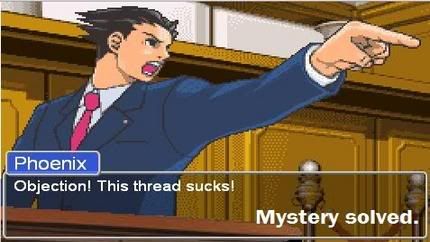
50% of the game, in fact, does not even take place within a courthouse. Before beginning the trials, players are required to investigate crime scenes and surrounding areas, which includes completing tasks such as those mentioned above. With that much more information in hand, Phoenix is ready to begin the trial.
During the court scenes, whilst cross-examining witnesses, Phoenix, along with the player, uncover the lies in their testimonies. This happens when said testimonies conflict with evidence. Now with all the pieces in hand, Phoenix makes his checkmate and the mystery is solved.
But it is not always that simple.
Just because there is evidence and whatnot does not mean the whole ordeal is a mystery. The reason it is, however, is because of the way Phoenix's (and hopefully the player's) mind works. Despite the fact that there are only a few facts presented to the court, the piecing together of all the various parts in order to uncover the dirty truth is what makes the Ace Attorney series a mystery series in some respects.
Phoenix Wright: lawyer by trade, detective at heart.
And now that I have devoted 900 words to rambling on why the above non-mystery series are, in fact, mystery series, it is time to commence with the second part of this essay: what the pieces of a mystery are, and how they are important. I shall shed some light on and examine a few of the tropes, conventions, etc. of mystery storytelling I have come across in my adventures (or lack thereof). Now, onwards to Hotel Dusk, just like I promised!
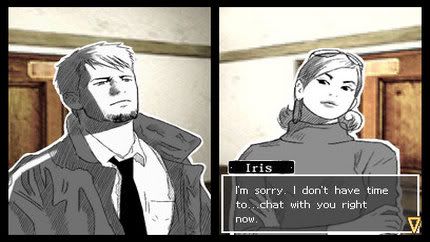
Hotel Dusk: Room 215, an adventure game for the DS, sees the protagonist Kyle Hyde searching for his former partner on the force long after he disappears, and trying to solve the mystery of that evanescence. Formerly a cop, he now works as a door-to-door salesman, and some other stuff about him, etc. What it all boils down to is this: Kyle is looking for this guy, and he stops at a hotel for the night. Unbeknownst to Kyle, Hotel Dusk houses guests who are all connected somehow (think six degrees of separation), and they have the answers he is looking for.
So there's the exposition for ya. The point is made fairly obvious, by the game itself, no less, that you're out to solve a mystery. Phoenix Wright was pretty blatant with its mystery elements, I merely set out to clarify/define/whatever why it should be considered such. Hotel Dusk, a mystery game through and through, utilizes the conventions of the genre almost masterfully. Now, to highlight these conventions:
Every little detail is important. Everything you see, for the most part, is crucial in some way to the story. Every set piece, every character, every line of dialogue all comes together and makes sense at the end. Towards the beginning, almost nothing is known. With the gradual build-up of info and details, the story manifests itself and the truth is revealed.
All the characters are important. Each character has his or her own back-story, a past life that explains their motives for being at the hotel, their intentions for saying the things they say, everything. The writers, from the beginning, set out to make sure there were absolutely no unimportant, uninteresting people within the world. Every character has some sort of bearing on the plot.
The player/audience is the one solving the mystery. This part runs full steam ahead into a bit of a gray area. Technically, the protagonist is solving it. Throughout the game he expresses his thoughts to the player, albeit without breaking the fourth wall, so the audience knows everything Kyle knows. However, because of the nature of the clues and the story, and to a degree, their predictability, the player will most likely find themselves knowing just a bit more than Kyle because of simple guesswork. It is my understanding that this was wholly intentional by the writers. Kyle, may have had the whole thing figured out in a matter of minutes and was simply not presenting his entire inner monologue. That is left unclear, but was done so in order to allow the player to figure it out first, piece by piece.
There's a twist in the plot. I'm now treading a fine line between spoiler territory and the safe haven of spoiler-free innocence. Yes, there is a plot twist to some degree. It depends on how the audience interprets it. Now, not all stories need twists. Mysteries, on the other hand, should utilize them as often as possible, while still trying to avoid becoming cliché. The element of surprise is what makes a mystery so... satisfying. Finally learning the truth of the story, and discovering if your assumptions were correct, is such an intense, exciting feeling. If the game is able to create an emotional connection with the player, then that makes the end much more rewarding.
So surprise! The plot of Hotel Dusk is executed exceptionally well for a fairly low-key DS game.
In summary, the Ace Attorney series contains all or most of these, as does every work of mystery literature ever created. If you come across a piece that does not, please let me know, and I shall gladly retract my statement. For now, however, I hope I have enlightened the masses (or whoever happens to stumble upon my humble little essay) on why the mystery genre represents the most enticing and satisfying portion of literature and storytelling, regardless of the medium.





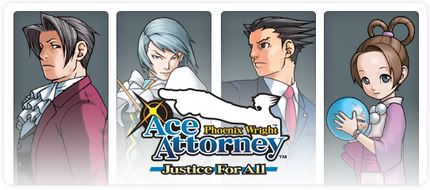
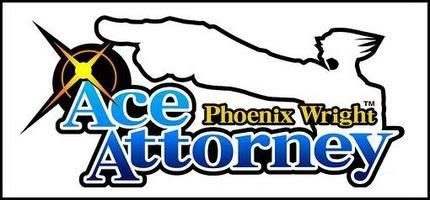
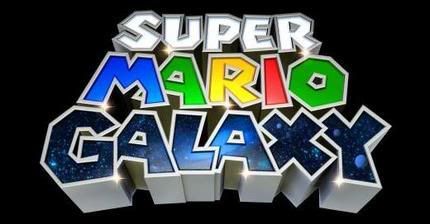


Log in to comment